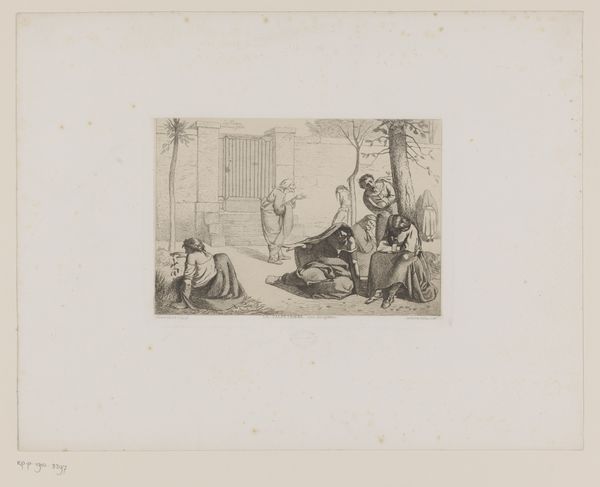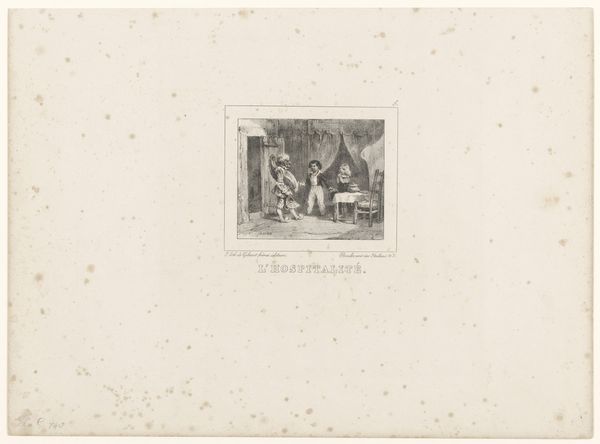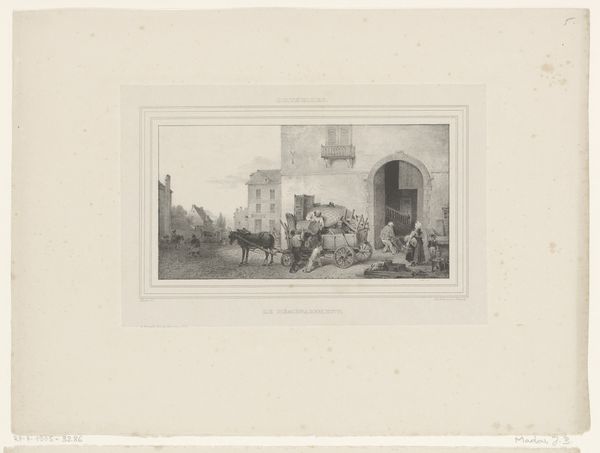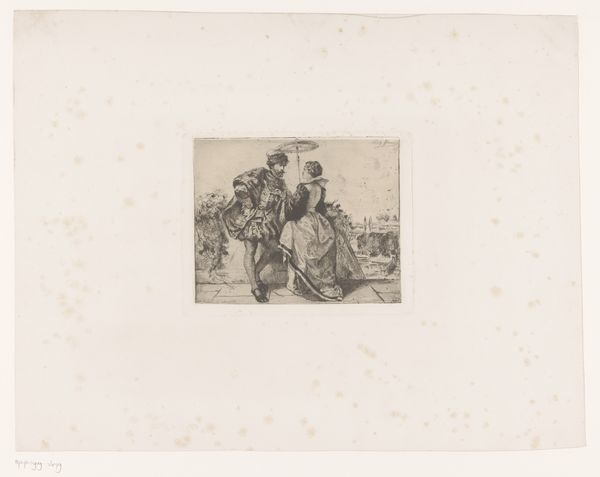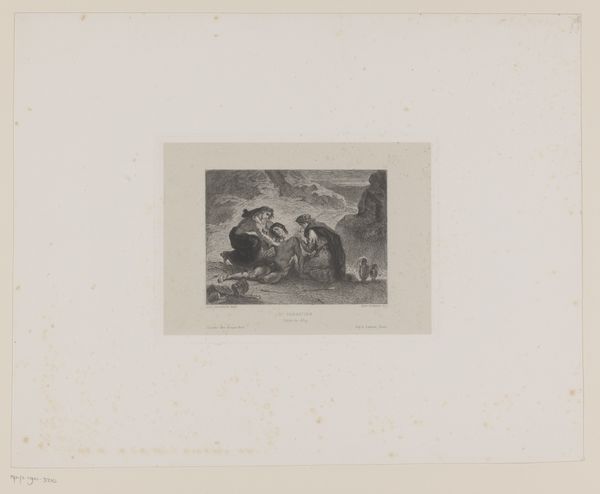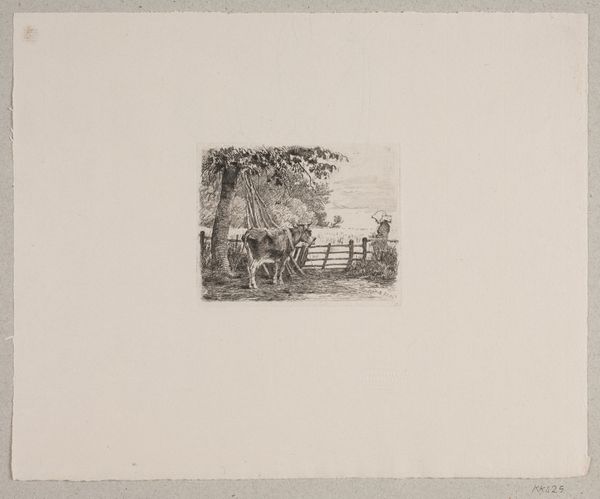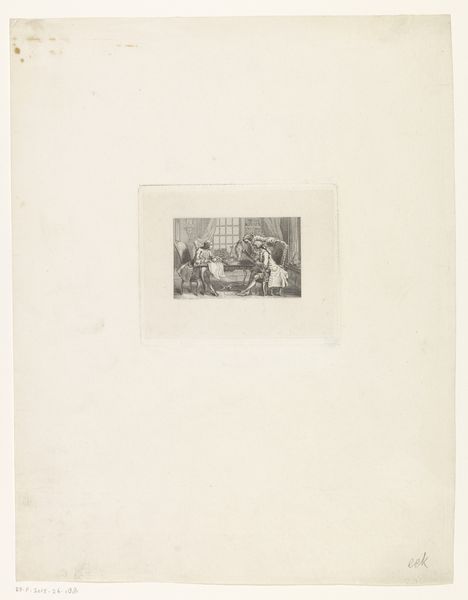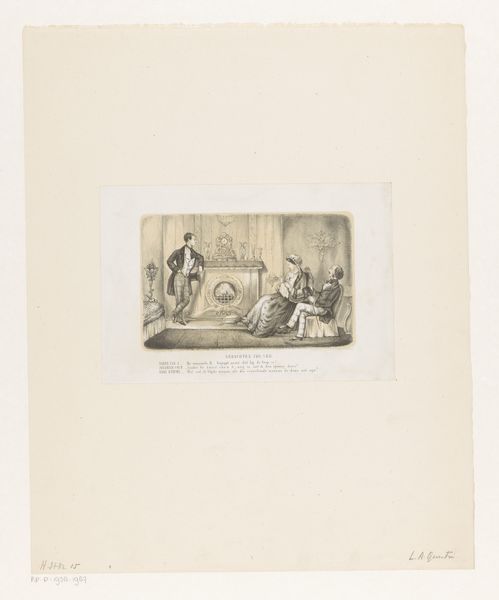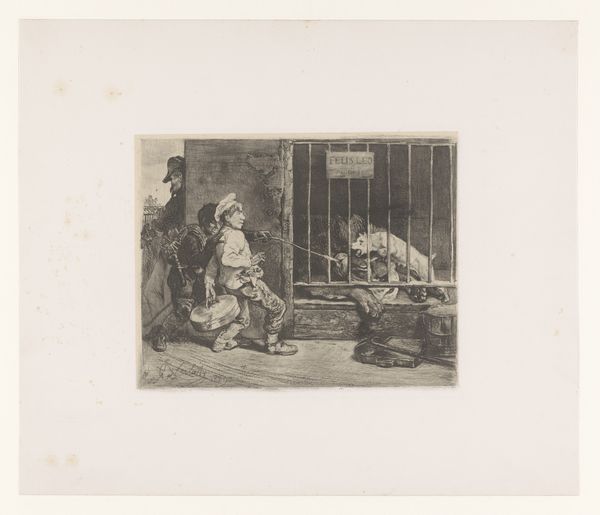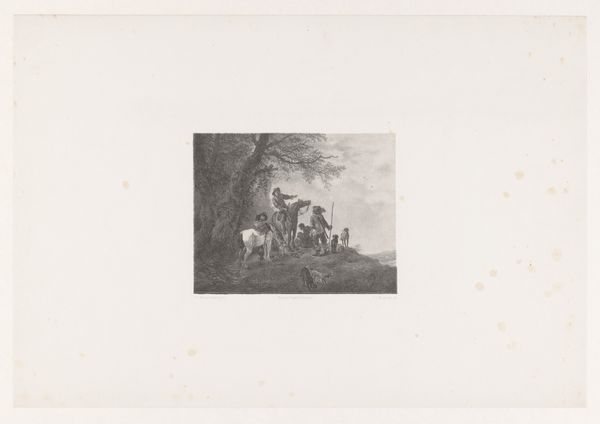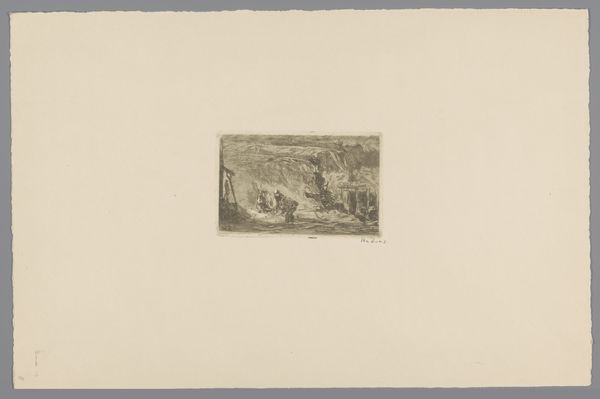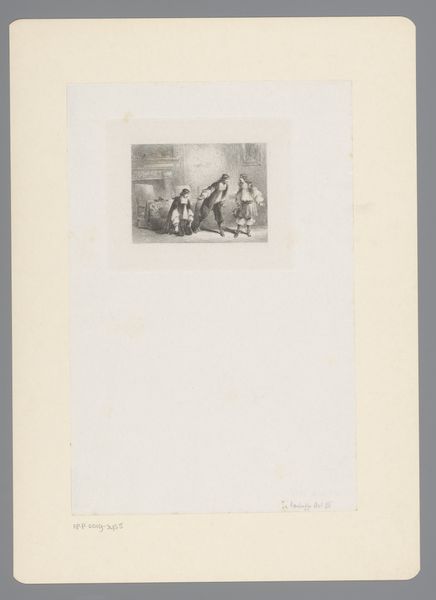
print, engraving
# print
#
genre-painting
#
history-painting
#
engraving
#
realism
Dimensions: height 141 mm, width 140 mm
Copyright: Rijks Museum: Open Domain
Curator: This engraving by Léopold Flameng, titled “Kraamvisite,” dates back to 1863. At first glance, the gathering suggests a quiet, intimate event depicted using precise linework. Editor: It feels almost voyeuristic, like we're peering into a private ritual. I am curious: What does the word "Kraamvisite" mean in relation to the imagery we observe? Curator: It translates to "new-baby visit", common practice among some Dutch people; we see a group surrounding a new mother and child. I wonder, what symbols resonate most strongly with you here? Editor: Well, the hearth is central, with its open fire radiating warmth, perhaps alluding to comfort and domesticity, but it's a restrained warmth, tempered by social decorum. It raises interesting questions about class and expectations, who is and isn't welcome in this space. The etching seems very proper. Curator: It is interesting that you note decorum! It suggests both welcome and restriction; I perceive symbolic overtones related to protection and perhaps purification linked with ancient beliefs of a family being at its most vulnerable post-partum. Editor: And are the women in positions of power or of servanthood? The arrangement presents a societal structure ripe for analysis. Where is the father in this portrait of family and society? Curator: A point well taken! Considering the artwork was created in the mid-19th century, Flameng's perspective would have inherently been colored by the era's views on women, domesticity, and social expectations. The role of women as guardians of the home and family was indeed often romanticized. It becomes a fascinating subject through the prism of gender roles. Editor: These subtle implications certainly invite a dialogue about family, the structures upholding it, and the roles imposed. The very act of visiting, with all of its attendant social rules, serves to solidify those bonds but also possibly highlight social hierarchies. Thank you. I appreciate it! Curator: A great examination! Thank you for guiding me through those important social cues imbedded in this composition. It is the artist who truly helps to reflect our own culture.
Comments
No comments
Be the first to comment and join the conversation on the ultimate creative platform.
